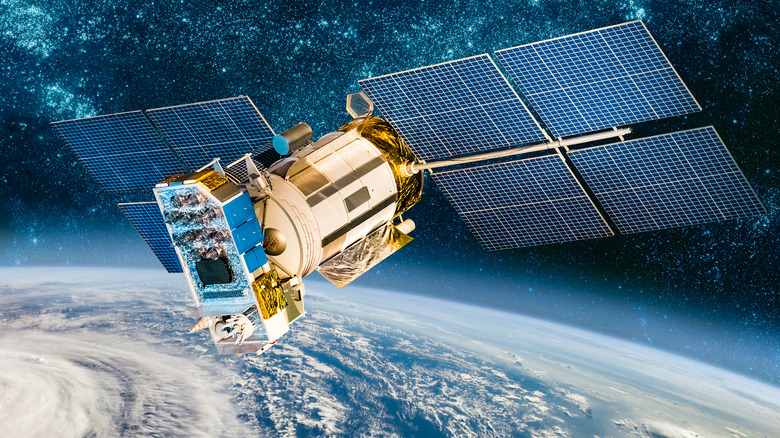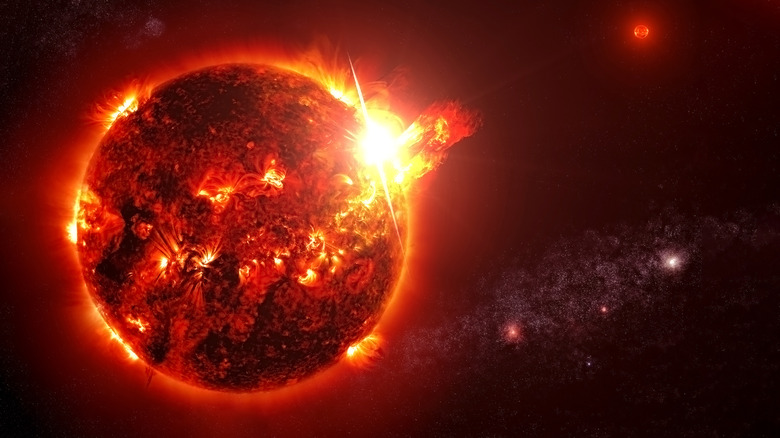Why Solar Storms Present A Problem For Satellites
Solar storms gain more attention as the world's dependency on satellites increases. Why? Because these storms have the potential to disrupt satellite operations. SpaceX lost 38 out of the 49 Starlink internet satellites it launched in February 2022, for example, because a solar storm hit the Earth's atmosphere around the same time. The event, reported to cost SpaceX about $50 million by CNBC, made it evident just how problematic solar storms can be.
Without satellites, life on Earth would be very different. The global population depends on satellites on a daily basis. As NASA explains, satellites are used for communications, electric power services, oil and gas pipelines, air and maritime traffic and navigation, GPS, weather and weather safety, agriculture, science, and other government, civilian, and military operations.
Solar storms, which are also called geomagnetic storms, happen when the Earth's atmosphere and magnetosphere are affected by solar activity. Solar storms can be caused by solar flares, coronal mass ejections, high-speed solar wind, or solar energy particles. One of these storms can last from hours to days, but its effect on the atmosphere may endure for weeks. Violent, extreme solar activity can even hit our planet in mere hours, leaving little time for preparations.
How solar storms disrupt satellites
NOAA's Space Weather Prediction Center explains that solar storms heat the ionosphere as well as the upper atmosphere, or thermosphere. This increase in temperature is caused by the energetic particles "falling" into the regions of the atmosphere. The heating of the atmosphere increases its density and causes satellites' drag to increase, too. Additionally, charged particles and magnetic disturbances can lead to the malfunctioning of key electronic equipment found on satellites.
SpaceX revealed that during the storm that caused its loss of Starlink satellites in February, drag increased by up to 50%. When the storm hit, the SpaceX team initiated contingency procedures, put the satellites into safe mode, and commanded them to "fly edge-on" to decrease the drag resistance. Additionally, the private company kept in contact with Space Force's 18th Space Control Squadron, a government space safety organization, and LeoLabs, a private commercial space radar tracking service. Despite its efforts, the company lost most of that batch of satellites.
While SpaceX's Starlink satellites are designed for safe deorbiting, which means they will burn up upon re-entry, not all satellites have this feature built-in by design. This makes the disruption of satellite services, re-entry, and space collisions a serious concern related to solar storms. NASA adds that it is not just unmanned spacecraft and satellites that are at risk. Launches and space operations can be affected by solar storms, too, and high levels of radiation are a risk to astronauts' health.

